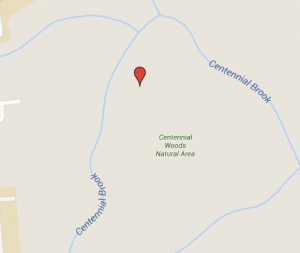The Beaver Marshland continues to change causing the news about this site to constantly change. It’s like the native we’ve drawn around the Earth. Earth’s environmental degradation was discovered in the 1960’s, which caused there to be an increased acts of activism. Then, there was a movement to educate and take stewardship of our planet Earth. Later, in the 1990’s there were many hopeful legislation efforts such as the Kyoto Protocol which tried to cap the amount of air pollutants that have entered our atmosphere however, richer countries were less inclined to change their habits. Now, our hopelessness in Earth makes us hopeful in creating a new Earth in Mars.
The Centennial Wood’s Beaver Marshland has been used for multiple purposes including Centennial Woods offers opportunities to immerse themselves in activities such as a cross-country skiing, walking, jogging, snowshoeing, and bird-watching. Centennial is also a large component in teaching many classes at the University of Vermont ranging from botany, environmental studies, geology and natural resources. In addition, it has served as an agricultural land and as military training facility equipped with a Bunker for the ROTC program here at UVM.
Centennial Woods and the Beaver Marshland has served to help many individuals throughout the centuries however, we have failed to reciprocate the same care it has given us. The beavers who once regulated water levels and succession are gone, power lines run over stumps of former trees which offered shelter for animals are gone, the trails have eroded away exposing roots due to increased foot traffic, and the streams carry the wastes found within Burlington, and people have used the site as a means of shelter.
There are many problems within this site however, there are many perspectives within our reach to make a change within our woods in order to create a promising future. Over the past decade, Burlington’s local government has removed public assistance housing. Therefore, much of the homeless population has been subjected to living in non-traditional spaces. Through the government’s actions, it has contributed to winners and losers. The local government has an institution has contributed to the increased degradation of the Centennial Woods area. There has been increased amounts of pollution as the homeless population has been given no other choice but to live in these woods causing there to be more plastic scrapes, more sulfates, and more erosion being contributed within this ecosystem. Therefore, in order to solve this issue, there needs to be an increase analysis done by researchers in order to see the correlation between the loss of homes and Centennial Woods degradation. As a citizen of the Burlington community no matter how temporary it may be I find it essential for there to be increased advocacy. Grassroots movements are essential to involving and educating the community about creating a justice system for all socio-economic classes. It needs to be clear that the need to commercialize the waterfront is not nearly as important as taking care of the citizens within Burlington. In order to petition the destruction of affordable housing and support the construction of new affordable homes. Involving political actors would challenge individuals’ ethics and the political economy while helping promote environmental justice for all of the society.
In addition to this, there would need to be increased education on our local environment which challenges social constructs and ideas the UVM and Burlington community have on society. In order, to achieve this there needs to be a greater dialogue with the citizens and our local woods. In order to create this bridge, in which non-human advocators which introduce themselves as wastes entering our local streams. Some of this activism can be created through pictures which show the degradation and erosion of our banks and soils. Through doing these there can be an increased awareness of the factors that are affecting even the most rural places are not immune and are affected by humans. Through changing this social construct of that this New England state has stayed pristine is not correct. This would promote the lack of stewardship and create more conscious citizens. Through this acknowledgment, there would be an increased connection and appreciation for our local environment.
Centennial Woods has reached a point where there is an increased acknowledgment that there is degradation present. Therefore, in order to solve this issues we need to treat the causes of the problem such as lack of housing and awareness. This will create a promising future where we are not giving up on our Earth.
